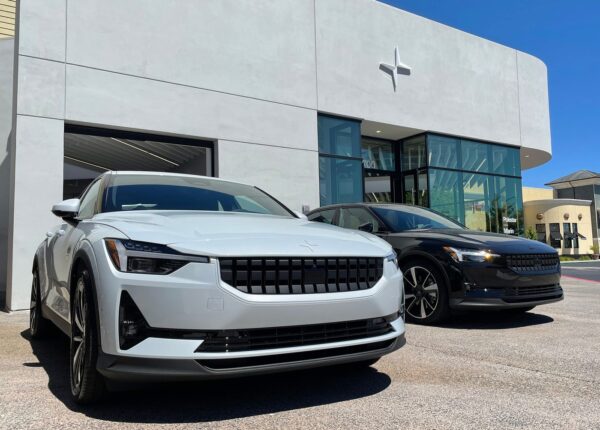U.S. has built a fortress to keep out Chinese EVs as millions sell around the world
By Yuka Hayashi
Chinese automakers are winning over millions of consumers around the world with affordable electric vehicles. They are conspicuously absent from one big market: the U.S.
Washington has effectively built a fortress to keep out Chinese EVs. Former President Donald Trump imposed a 25% tax on Chinese auto imports. President Biden backed that policy and went further, denying them “Buy America” credits that can reduce consumers’ price tag by thousands of dollars.
These steps have made it virtually impossible for Chinese automakers to compete with vehicles built in the U.S. or imported from friendly nations, even as they rapidly penetrate other markets. Coming to AmericaAmericans have a growing appetite forforeign-made electric vehicles.Annual value of U.S. EV importsSource: U.S. Census BureauNote: 2023 data is as of September.2017’18’19’20’21’22’23036912$15billion
So powerful is the Chinese automakers’ push that some U.S. officials say even the significant U.S. trade barriers might not be enough, going forward, to keep them out of American markets and protect domestic manufacturers. U.S. officials point to massive subsidies China has shelled out to prop up its EV supply chains, which they say allow Chinese makers to sell their products at unfairly low prices.
“China is determined to dominate the electric-vehicle market by using unfair trade practices, but I will not let them,” Biden told auto-union workers in Illinois earlier this month. “I promise you.”
China is on its way to becoming the world’s largest auto exporter this year, replacing Japan. It builds roughly two-thirds of all electric vehicles globally and the biggest Chinese EV maker, BYD, made 1.9 million vehicles last year, more than
Tesla’s TSLA 0.49%increase; green up pointing triangle 1.4 million, according to the companies.
“Picture a modern day Godizilla with the power to trample on and destroy anything that gets on his path,” said Michael Dunne, chief executive of ZoZo Go, an advisory company specializing in the Chinese EV industry. He counts more than 100 countries where Chinese EVs are sold. “The only market where Chinese have not yet really begun a big assault is right here in the United States.”
Some U.S. lawmakers and policy makers want to keep it that way and are calling on the Biden administration to consider further expanding tariffs on Chinese autos.
“It is a matter of time before PRC manufacturers will be able to absorb the additional 25% tariff,” wrote members of the House Select Committee on the Chinese Communist Party, including Chairman Mike Gallagher (R. Wis) and top Democrat Raja Krishnamoorthi of Illinois, in a letter to U.S. Trade Representative Katherine Tai this month. PRC is the acronym for People’s Republic of China.
Biden administration officials, meanwhile, say they have learned hard lessons from China’s rise to dominate American manufacturers in industries such as solar panels and steel.
The U.S. Trade Representative’s office is staying vigilant against the threat of Chinese EVs flooding the U.S. market, said Brian Janovitz, the agency’s chief counsel for China trade enforcement. “We’ve learned from past experience that if you wait for a lot of imports to swamp the market…it also becomes much more difficult to defend against that threat,” he said on an August panel.
Higher tariffs could receive a mixed reception among U.S. automakers. They are eager to see U.S. government policies slow the rise of the Chinese EV industry but are also wary of the possibility that Chinese officials could retaliate with their own tariffs, as China represents the second-largest market for U.S. branded vehicles.
Complicating matters is the fact that China has built dominant supply chains for EV batteries and the minerals used to make them. U.S. automakers will inevitably rely on these supplies as they increase their own EV manufacturing to meet the Biden administration’s goal of reducing carbon emissions, said John Bozzella, who heads Alliance for Automotive Innovation, an industry group whose members include Ford Motor and General MotorsGM 0.72%increase; green up pointing triangle.
“China has a 10- to 15-year head start in the EV industry,” Bozzella said.
Among China’s biggest overseas targets has been Europe. BYD’s popular Atto 3 SUV, a global bestseller that comes with an advanced driving-assistant system and heated seats, is offered at €39,500, or about $43,000. Also popular is the MG5 EV, a larger “estate car” built by a former British brand now owned by Chinese state-owned
SAIC Motor. Its price starts from €35,395, or $38,500.
WSJ

Leave a Reply
You must be logged in to post a comment.